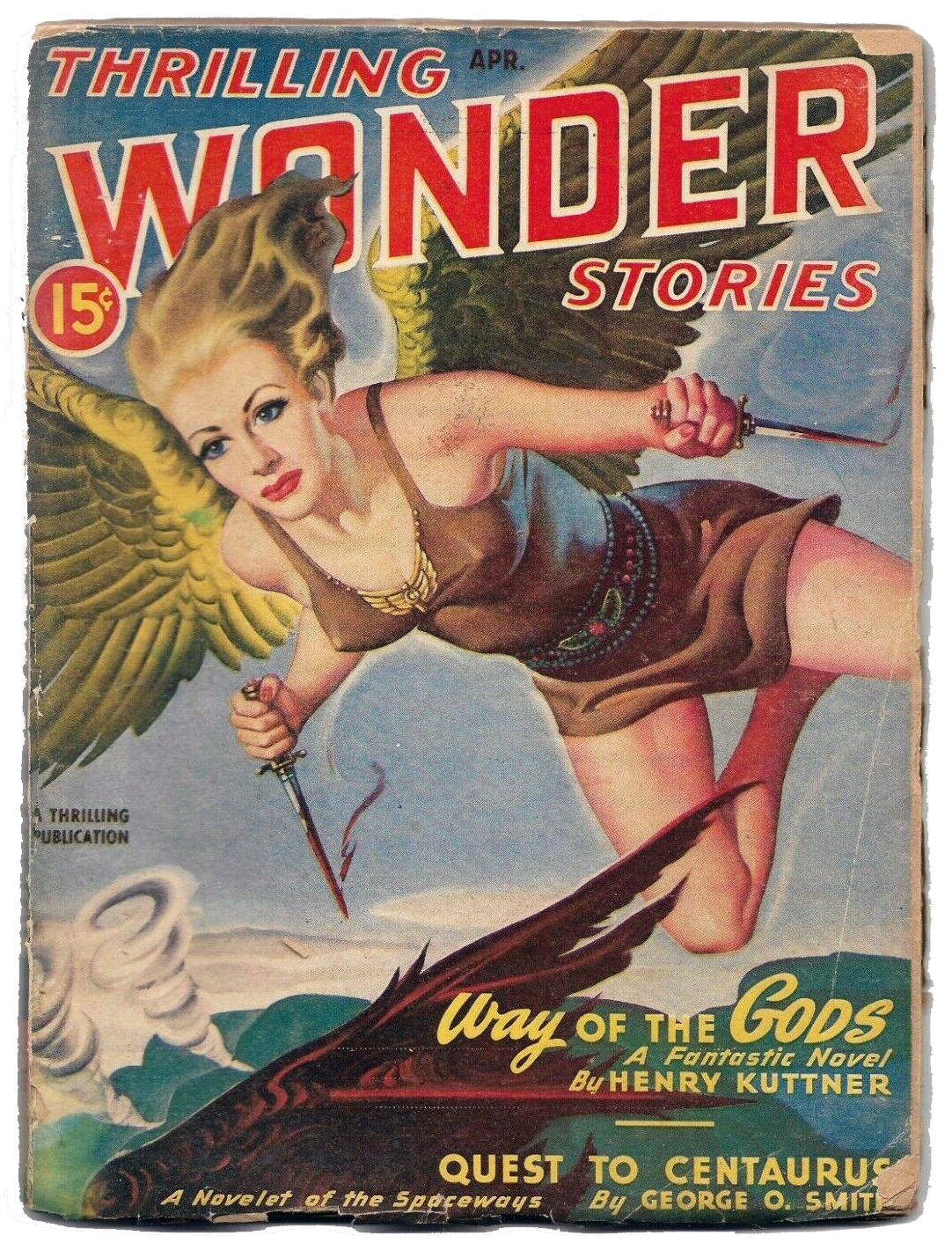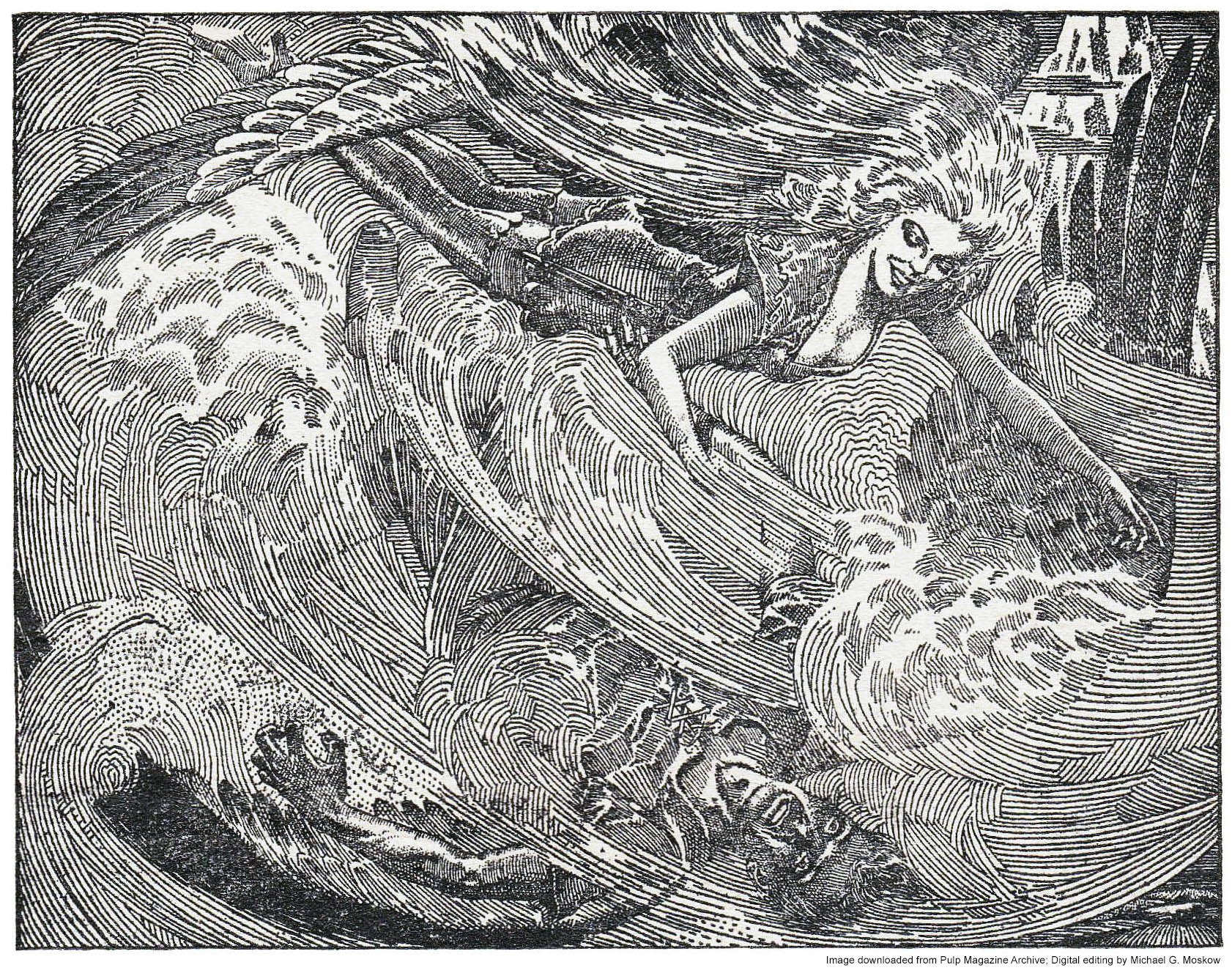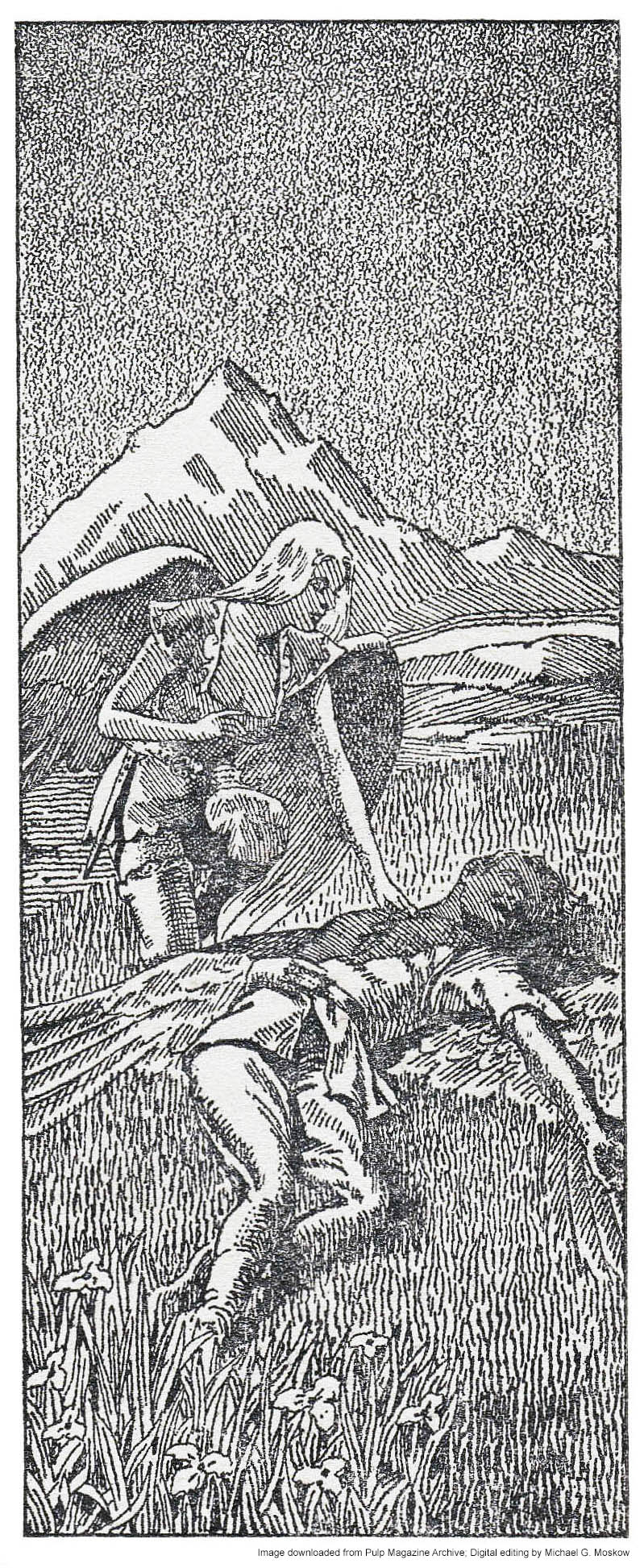Hawkgirl of DC Comics’ fame, without her mask?
No, not quite!
This is Elje. She’s one of the protagonists in Henry Kuttner’s 1947 novella “Way of the Gods”, which appeared as a single installment in the April 1947 issue of Thrilling Wonder Stories. She’s depicted here by famed illustrator Earle Bergey, who produced innumerable – and quite memorable – pulp covers.
Remarkably (can I say astonishingly, too?!), considering the significance and influence of Kuttner’s body of work, this novella has only been published (in print, that is) once in the seventy-seven years since its first appearance: It comprised the entire content of the August, 1954 (specifically, number #28) of American Science Fiction Magazine issued by Malian Press of Australia.
Based on a brief overview of this issue’s contents (via Archive.org) the setting – or at least the theme – of the novella seems to be part of the same conceptual “universe” as that of Henry Kuttner and C.L. Moore’s anthology Mutant, The basis of the stories within this book is that the advent of the atomic age – whether atomic weapons or atomic power; the stories were all penned between 1945 and 1953 – has suddenly generated within the human race a not insubstantial proportion of mutants (kind of like a precursor to the X-Men?) whose existence proves intolerable and is perceived as a threat to the conventional run of humanity. The characters in these tales are thus forced to somehow contend with living among homo sapiens, or, as in the case of “Way of the Gods”, leave the Earth entirely, to navigate their challenging destiny among their own, new … species of mankind.
(Gee, now that I’ve described Kuttner’s novella, maybe I’ll download and read it after all!)
The story is accompanied by three illustrations by Lawrence S. Stevens (“Stevens”), which have a superficial resemblance to the work of Virgil Finlay, particularly the intricate drawing on page 14. Actually, it’s that specific illustration that drew my attention to this novella in the first place, for I first noticed it several decades ago (seriously!) in Brian Ash’s Visual Encyclopedia of Science Fiction, where, on page 196, it’s appropriately found within a chapter covering “Mutants and Symbiotes”. This image and the two others were downloaded from Archive.org and then tweaked a little bit via Photoshop, to generate the best contrast and brightness.
Enjoy.
Spawn of atomic fission,
this strange company of mutants exiled by humanity
battles against enslavement in a foreign world
dominated by the evil Spirit of the Crystal Mountain!
Illustrations by Lawrence Sterne Stevens (“Lawrence”), for “Way Of The Gods”, by Henry Kuttner (pages 12…)
Together they glided across the rushing air currents.
(…14…)
“Better to die that way than this,” said Elje.
“All right, Kern, we’ll go.”
(…and 18)
He heard a voice of impossible sweetness, and slowly, slowly,
he felt warmth return to him.
And otherwise?
“Way of the Gods”, at…
… Listenly (requires Google login)
… Internet Speculative Fiction Database
A Book?
Ash, Brian (editor), The Visual Encyclopedia of Science Fiction, Harmony Books, New York, N.Y., 1977















